
No sooner had I complimented Forest and Land Scotland on how they had opened up their car parks in Glen More to campervans (see here) than they did an about turn as a result of events on the weekend that followed (see above). FLS is now trying to close car parks in Glen More to campervans staying overnight and the Cairngorms National Park Authority was quoted (in the next page of the article) yet again as saying how they don’t really want to introduce camping byelaws to control what people do. What neither FLS nor CNPA have said is that almost all of the problems in Glen More have been created by the failure of our public authorities and the Scottish Government to provide adequate infrastructure for visitors.
The Glenmore campsite scandal
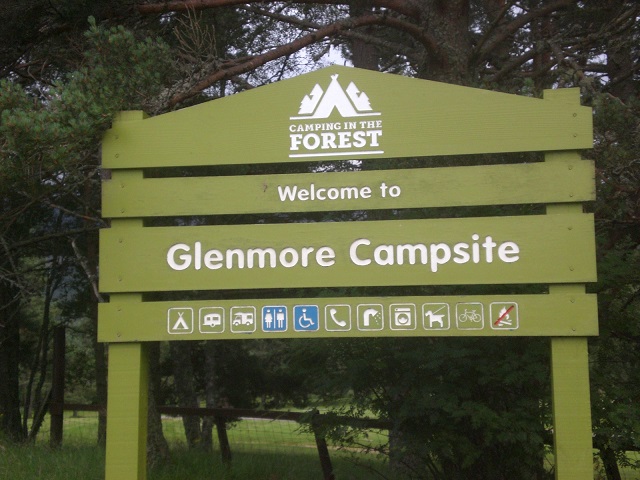
A large part of the problems in Glen More would disappear overnight if the Glenmore campsite hadn’t been closed to the public by Camping in the Forest.
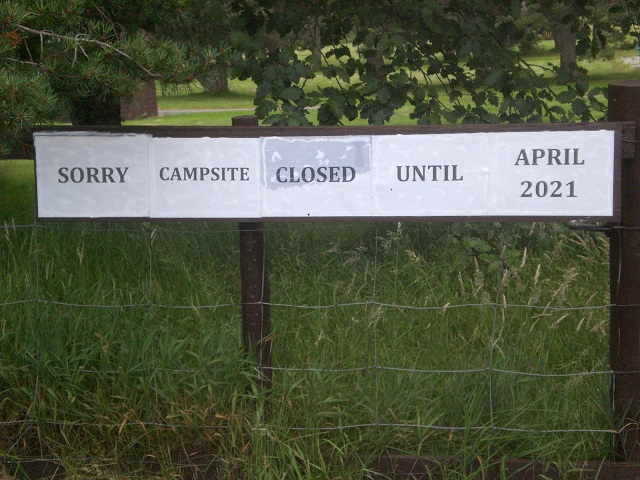
To add salt to the wound, Camping in the Forest appears to be policing the campsite, which provides the best area for camping in the whole of Glen More, to prevent anyone from camping there informally:
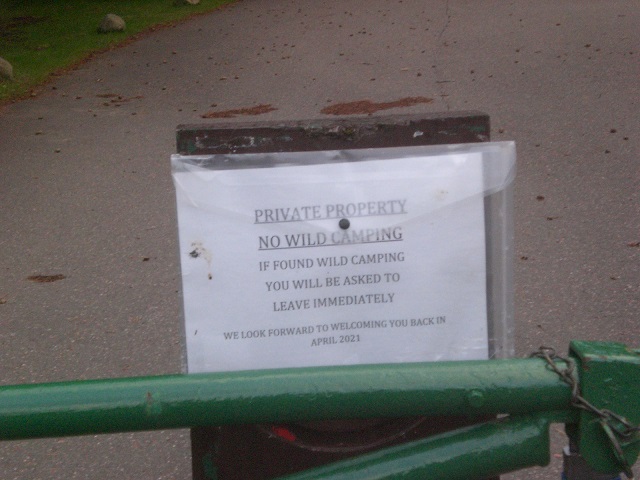
Camping in the Forest’s actions force people to camp in far more sensitive areas.
The Glenmore campsite is owned by Forest and Lands Scotland and leased to “Camping in the Forest” by Scottish Ministers. The Minister responsible, Fergus Ewing, last week was reported in the Strathy as calling on Camping in the Forest to re-open the campsite:

This ‘blast’ from Fergus Ewing was bizarre. Since FLS own the land, why doesn’t he, as the responsible Scottish Government minister, simply ask his department to terminate the lease? A well drafted lease will normally contain provisions for how it may be terminated in exceptional circumstances (I have requested a copy under Freedom of Information laws). Even if the lease has been poorly drafted and does not contain such a provision, as Minister responsible Fergus Ewing could offer to buy out the leases now and hand the land over to someone prepared to manage it in the public interest.
Camping in the Forest is not, however, an organisation totally independent of government. It operates 16 campsites across the UK on land owned by what was the Forestry Commission. As far as I can ascertain all 16 – they include not just Glen More but campsites at Cashel on Loch Lomond and Cobleland in the Trossachs – are run by “Camping in the Forest LLP” (Limited Liability Partnership). While this is controlled by the Camping and Caravanning Club Ltd (see here), the Forestry Commission is listed as the other, minority, shareholder and supplies one of the two Directors of the company:
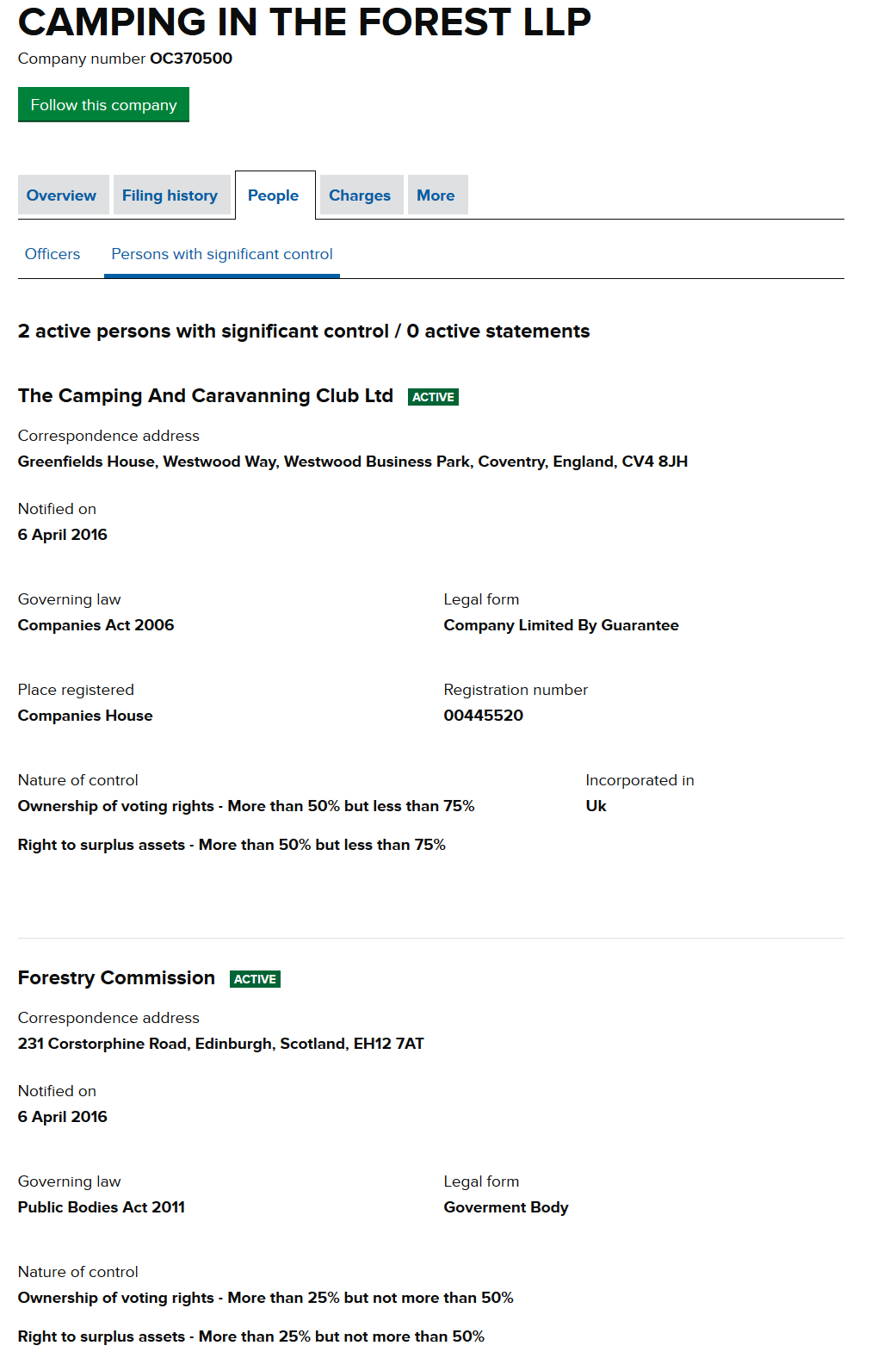 In other words Mr Ewing, as lead Minister for Forestry, would appear to have an interest in the lease not just as the lessor but the lessee. As part owner of the company, the “Forestry Commission” could ask Camping in the Forest to re-open all its campsites in the public interest.
In other words Mr Ewing, as lead Minister for Forestry, would appear to have an interest in the lease not just as the lessor but the lessee. As part owner of the company, the “Forestry Commission” could ask Camping in the Forest to re-open all its campsites in the public interest.
The accounts of Camping in the Forest show that as lessee the Forestry Commission had been receiving income (£411,215 for 2019) from these campsites each year:
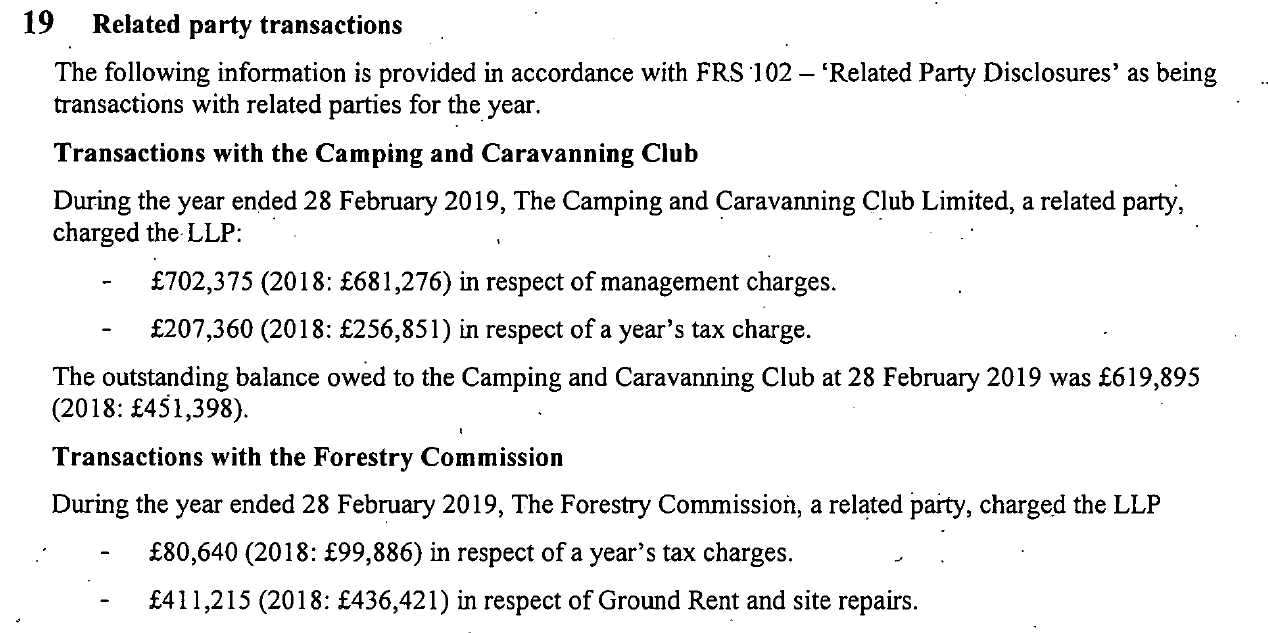
It is possible that when the Forestry Commission was split up in April 2019 Mr Ewing, who led the negotiations on behalf of the Scottish Government, waived any rights to the income derived from the three campsites in Scotland that were part of the Camping in the Forest portfolio. If that was so, further investigation would be merited. It appears more likely, however, that Mr Ewing reached some agreement on how income from Camping in the Forest would be apportioned between England and Scotland. Assuming that is the case, by allowing all three Scottish campsites to remain closed, Mr Ewing is depriving forestry in Scotland of much needed income and the Strathspey area of some much needed jobs.
It would be in the public interest to know if Camping in the Forest has received any money from the UK Government to furlough staff or any other compensation as a rural business (Mr Ewing was responsible for the disbursement of grants to rural businesses in Scotland during the Covid-19 crisis)
Mr Ewing clearly now needs to act very quickly to address this disastrous situation for which he holds ultimate responsibility and transfer all three Camping in the Forest campsites in Scotland to alternative operators who will act in the public interest.
The consequences of the campsite closure and additional infrastructure needed
With the main campsite closed, Glen More, as the most popular visitor destination in the Cairngorms National Park, would be under pressure at the best of times. But with the rise in staycations as a result of Covid-19 and people being urged to take their holidays in Scotland by First Minister Nicola Sturgeon, it is not surprising the glen has been overwhelmed. Local people – I met two last week near the summit of Creag Meagaidh who had been doing litter picks – and local forestry and National Park staff have been left to sort out the mess. The madness is illustrated by the local office of Forest and Land Scotland taking on 16 extra part-time staff to help manage visitors – heaven knows how they are paying for this – when their ultimate boss is failing to act to address the most fundamental part of the problem and appears to have cut off a source of income that might have helped pay for this.
The top priority is to create capacity in and around the glen to meet the influx of visitors. Even if the campsite re-opened tomorrow, there would be insufficient capacity.
Top priority should be toilet provision. When the visitor influx started, Forest and Land Scotland’s toilets at its visitor centre in Glenmore were still closed:
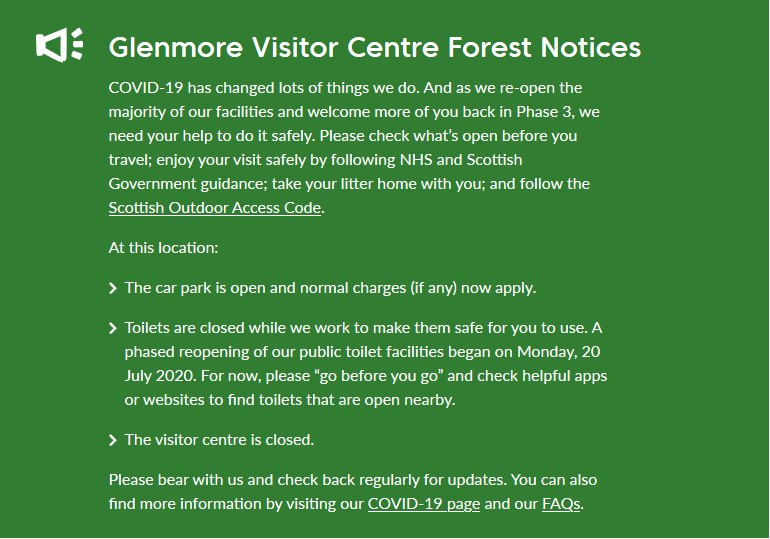
While the toilets have now been re-opened – see below – it’s hardly surprising there was a disgusting faecal mess in some of the area if people had “nowhere to go”.
There has, however, been a broader issue with toilet capacity ever since Mr Ewing pushed the Cairngorms National Park Authority to consent to two new houses being built opposite the campsite where a public toilet was previously located. Glen More is a prime area for mobile toilets, as I have previously advocated (see here).
The other pressing issue is capacity for campervans and more specifically large mobile homes. The extent of the issue is illustrated by the data (see here) that Alan Brattey has collected from surveys over the last two weeks, some of which was published in the Strathy today. The data shows the extent of the demand for campervans – almost 100 a night at the weekend (suggesting that many campervanners are in fact Scottish voters) – and how this has been affected since Forestry and Land Scotland tried to close its car parks overnight.
While in my view Forestry and Land Scotland should re-open its car parks to vehicles overnight, larger mobile homes should be asked to stop off elsewhere. The problem is that they are far too big for many of the car parks and take up space at the expense of others. There are two obvious places which could be used for this purpose in the short-term, like on the continent where large mobile homes are directed to car parks on the fringe of settlements: the parking areas around the Aviemore Centre and the Coire na Ciste car park.
In the medium term what is needed to reduce traffic pressure in the glen is a park and ride from Aviemore, as was floated in the Cairngorm and Glenmore Strategy. However, if it had even a shred of enterprise, Highlands and Islands Enterprise would now be facilitating mobile homes to stop off in Coire na Ciste. HIE has failed completely to act on proposals from entrepreneurs to provide facilities for campervans in the Ciste (electric hookups, toilets etc) which might have brought some much needed income into Cairngorm Mountain. This possibility now gets a token mention in HIE’s latest version of a vision for the mountain. Don’t expect anything to happen. Alan Brattey’s survey recorded 35 mobile homes in the Ciste Car Park on just one single night. If provided with facilities at £10 a night, that could bring in over £1500 a week of income to Cairn Gorm. That would be a far better capital investment than spending £10-15m on repairing the funicular and could be done now with a supine CNPA expediting every Planning Application that is placed before it by HIE.
Taking this argument further, the current situation in Glen More shows the complete stupidity of HIE’s plan to repair the funicular railway. The area needs no more summer visitors and, as Alan Mackay showed this week (see here), the funicular is not the way to bring back winter visitors, who are needed, to the area. Mr Ewing could usefully be instructing the agency for which he is responsible to spend some of the money set aside to repair the funicular on providing basic visitor infrastructure in the glen. That is the real priority.
The response of our public authorities to the problems in Glen More
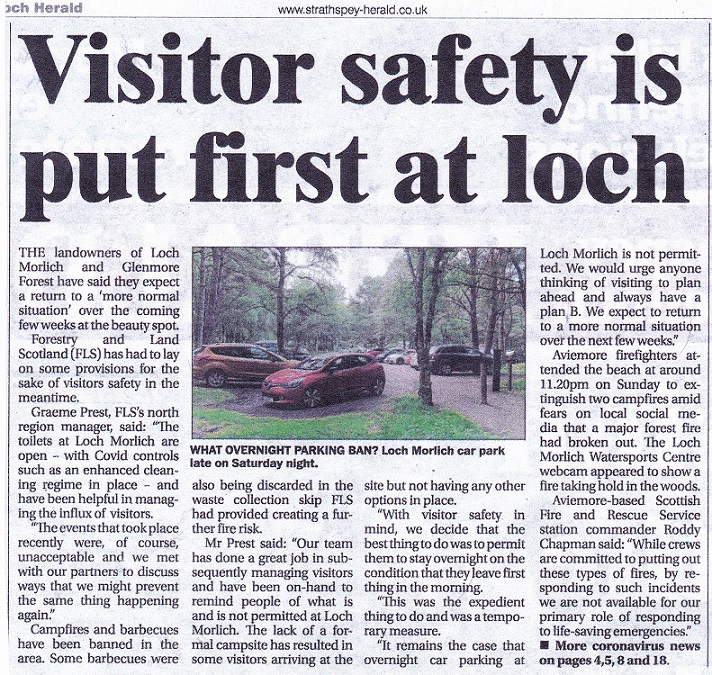
While Graeme Prest, the FLS Manager, stated to the Strathy that people’s behaviour was “unacceptable”, it is arguable he had but little choice to do this in a culture where it is always the individual who is blamed for the failings of our public authorities. His statements that the re-opening of the toilets “have been helpful in managing the influx of visitors” and the “lack of a formal campsite has resulted in some visitors arriving at the site but not having any other options in place” show what the real causes of the problems were.
While having the power to control entry vehicle to their car parks, FLS have not gone in heavy handed against people who have broken their rules. Instead they are currently allowing people to stay if they agree to leave the next morning. This is a welcome contrast to the Loch Lomond and Trossachs National Park Authority where public authorities have been abusing their powers and charging dozens of people (see here), . It seems that FLS has retained some ability to distinguish between responsible and irresponsible behaviour, as set out in our access legislations and the Cairngorms National Park Authority appears to have been taking a similar line (see here). (However the statement that “At no time, should anyone be lighting a fire in the Cairngorms National Park, posing a risk to people, property and our natural heritage” is wrong. You have a right to light a fire under the Scottish Outdoor Access Code and there clearly are some places in the Cairngorms National Park where you could do this responsibly).
Any plan for the future should be based on allowing people who exercise their access rights responsibly to continue to do so. The problem, however, is that neither the CNPA nor FLS are setting out what infrastructure is needed on the ground to enable people to enjoy the area without adversely affecting the natural heritage or the local people that stay there. Without a plan, starting with getting Fergus Ewing to re-open the campsite, the pressure on staff to try and restrict the area to visitors will increase. All that will do, just like the disastrous Loch Lomond and Trossachs National Park camping byelaws, is displace the problems elsewhere.
What needs to happen
Visitor Management at Glen More is as much of a test of the Cairngorms National Park Authority as east Loch Lomond has been to the Loch Lomond and Trossachs National Park Authority. The problem is not just that there has been a failure to implement the Cairngorm and Glen More strategy – not helped by HIE failing to deliver any of what was promised for Cairn Gorm – but that this plan is no longer fit for the purpose. An emergency summit, that includes not just local agencies but local people and all the recreational and environmental organisations with a stake in the area, should be called to agree the basic building blocks for a new plan.
As for resources, besides re-opening the Glenmore campsite, Mr Ewing should instruct HIE to use some of the money earmarked to repair the funicular on providing basic facilities in Coire na Ciste which would reduce pressure on the area.
The other MSP for the local area, Finance Secretary Kate Forbes,yesterday announced a £14m subsidy to keep owners of large hotels going over the winter (see here) because of the “important contribution” they make to the Scottish economy. A similar sum of money could have addressed most of the gaps in visitor infrastructure which are causing problems at present (my rough estimate was £10m would provide a good start).
There are plenty of resources. The fundamental question is when is the Scottish Government going to provide infrastructure to help people enjoy the countryside and protect our finest landscapes on which the rural hotel trade depends?

We need to think ahead! This raises the opportunity for innovative packaging up of Cairn Gorm, Glenmore Campsite/café/Loch Morlich and Glenmore Lodge – all publicly owned- under a single legal entity with 51% control in community hands and 49% in public body hands. Seats on the board for HIE, F&LS, SportScotland and CNPA – but a majority of community members. An independent chair perhaps and an advisory board of specialists. Core staff living and recruited locally – able to move between different operational sites at different seasons – scaling up to meet demand. Existing staff TUPE across. All revenues from activities and events retained locally and initial investment from Scottish Government – say £10million ring fenced for new entity to allocate as they decide. Open and accountable – biennial mountain conference/presentation. Social enterprise – train up young people. Glenmore /Cairn Gorm as a sub brand of the CNP.
A great answer to Paul’s comment and absolutely we need to be doing something like this. I was involved years ago in an attempt by mountaineers to “take over” Glenmore Lodge, as had happened with Plas Y Brenin in Snowdowia, and we got nowhere………..so quite a challenge!
Very good article, well written and covers most of the issues. The only thing missing is the mentioning that the bodies concerned with managing and encouraging tourists to come to the highlands are run by idiots. These same bodies never listen to local concerns and we always end up trying to pick up the pieces of bad decision making.
Exactly the same issue which was used to justify the Loch Lomond camping ban – a minority behaving badly. Where are the police and justiciary? The vast majority of responsible campers want the idiots controlled every bit as much as the local inhabitants do.
Some of the problems are due to lack of facilities, as seen in the press cuttings above there is a ridiculous attitude of “they don’t pay for the facilities we don’t provide so there’s no point in providing them because they wouldn’t pay for them”.
There must be plenty of campervanners who don’t want to pay through the nose for formal campsites with full facilities but would be happy to pay a reasonable amount for water and disposal facilities. These could be made available as prefabricated units for suitable supervised sites like filling stations with the income shared between the provider and the site owner.
As a Camping and Caravanning Club member it appears they do not have a completely free hand in running Camping in the Forest sites as the management rules are different in some areas from their own sites. That said they have reopened most of their own sites across the UK but not all, without explaining the reason for the exceptions.
I’ve been in email correspondence with the C&CC for a while, trying to discover why they won’t even allow self contained motorhomes into Glen More… the reason they claimed they shut the site was because they couldn’t maintain appropriate hygiene (many other sites have managed to). They seem unable to understand that self contained motorhomes are .. self contained, and don’t need to use a toilet block. I’ve tried arguing that this would be easy money for them. No response. I tried pointing out that competitors are providing even just electric hookup to motorhomes and selling lots of bookings (see Loch Katrine). No response. Very disappointing. My conclusion is that they are a very English-centric organisation where they primarily cater for caravans, and just aren’t bothered about anything else. This is disappointing not just for motorhomes, but anytime who wants to support and encourage responsible tourism in their area.
It’s strange, because C&CC actually have several sites both their own and CITF which have no facility blocks. I don’t understand why they can’t open more sites on this basis, leave the facility blocks closed if there is a problem. They have done this with some sites but insist that camping units using them have a built in shower, even toilet tents are not allowed.
It seems to be a rule across the board that CV19 restrictions have to be arbitrary and make no sense…
My understanding is that you need the landowner’s permission to light a fire irrespective of the SOAC
Hi, that is not the case as I understand it. There was, before the Land Reform Act, a legal right to light fires on beaches but lighting fires is not excluded from access rights. The Code advises people to keep fires small and to cook if possible using a stove. Fires in or close to ancient forest, whether lit by landowners or visitors, are generally not a good idea.
Also, I agree completely with you and this is exactly the discussion I had with a friend on Braeriach last week. If its not profitable to open the campsite then the Minister should facilitate its opening in the public interest…which is utterly obvious.